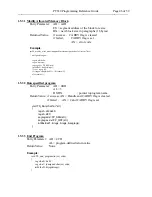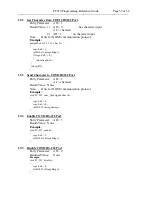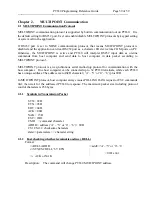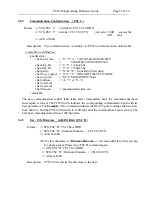
PT630 Programming Reference Guide
Page 59 of 59
------------------------------------------------------------------------------------------------------------------
Chapter 2.
MULTIPOINT Communication
2.1 MULTIPOINT Communication Protocol
MULTIPOINT communication protocol is supported by built-in communication tool on PT630. It is
the default setting for RS232 port. User can enable/disable MULTIPOINT protocols by keypad setting
or system call in the application.
If RS232 port is set to NONE communication protocol, that means MULTIPOINT protocol is
disabled and the application can treat RS232 port as a character I/O device like COM ports on PC.
Otherwise, the MULTIPOINT is active and PT630 will interpret RS232 input data as on-line
commands from host computer and send data to host computer in data packet according to
MULTIPOINT protocol.
MULTIPOINT protocol is an asynchronous serial multi-drop protocol for communication with the
host computer. One host computer can be connected up to 32 PT630 terminals, while each PT630
has a unique address. The address is an ASCII character ( ‘A’ – ‘Y’ or ‘0’ – ‘6’) plus 80H.
In MULTIPOINT protocol, host computer always issues POLLING DATA request or ESC commands
first, then wait for the addressed PT630 to response. The maximum packet size including protocol
control characters is 256 bytes.
2.1.1 Symbols in Transmission Packet
STX = 02H
ETX = 03H
EOT = 04H
ACK = 06H
NAK = 15H
ESC = 1BH
CMD = command character
ADDR = address (‘A’ – ‘Y’ or ‘0’ – ‘6’) + 80H
CS1 CS2= 2 checksum characters
<data>/<parameters> = character string
2.1.2 Fast checking whether terminal is on-line ( BELL)
Format:
⇒
BELL
ADDR
;<addr>=‘A’~’Y’
or
’0’~’6’
⇐
STX ESC BELL ‘63’ ETX
;
;
= 01H error
⇒
ACK or NAK
Description: The command will change PT630 MULTIPOINT address.



































